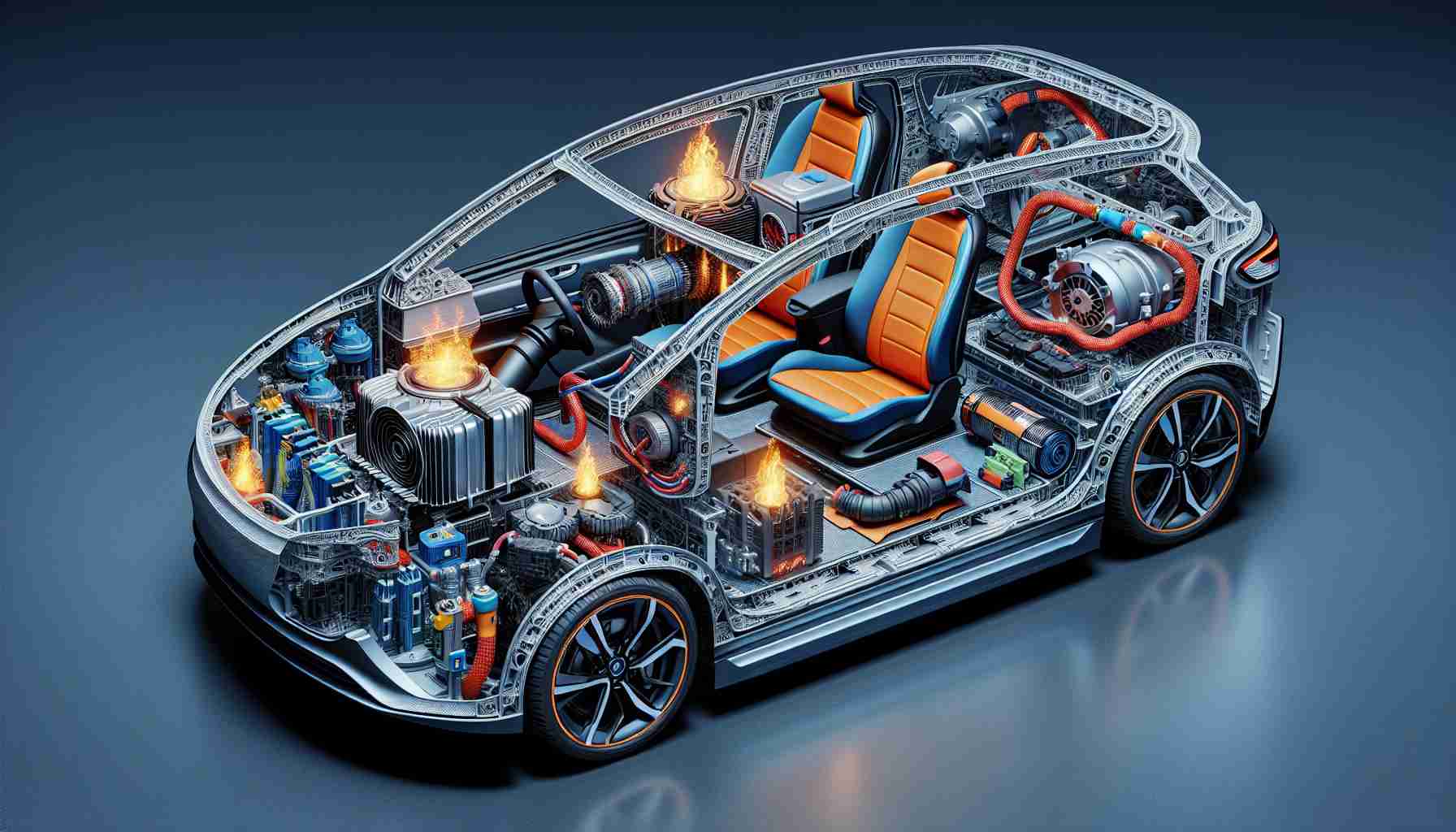Electric vehicles (EVs) have gained significant popularity in recent years, with the market expected to reach a staggering US$3.5 trillion by 2044. As the number of EVs on the road increases, it becomes crucial to address the issue of fire safety. While statistical data suggests that EVs are less prone to catching fire compared to internal combustion engine vehicles, the potential risks associated with even a low occurrence rate cannot be ignored. This has prompted researchers and manufacturers to focus on developing effective fire protection materials that can either prevent the spread of thermal runaway or delay it long enough to ensure the safety of occupants.
According to a report by IDTechEx titled “Fire Protection Materials for EV Batteries 2024-2034: Markets, Trends, and Forecasts,” the choice of fire protection materials plays a critical role in mitigating the risks associated with EV fires. The report analyzes various material options used in EV battery packs, including ceramic blankets, mica, aerogels, coatings, encapsulants, compression pads, and phase change materials. It highlights the importance of considering key properties such as thermal conductivity, density, thickness, dielectric strength, maximum fire protection temperature, and cost when selecting the optimal fire protection material.
One of the factors influencing the choice of fire protection materials is the evolving battery design in the EV market. Different cell formats and battery structures, such as prismatic, pouch, and cylindrical, have varying requirements for inter-cell materials and fire protection. For instance, cylindrical systems often utilize encapsulating foams, while prismatic systems typically rely on sheet materials like mica.
Additionally, advancements in battery design, such as the move towards cell-to-pack configurations, pose new challenges in terms of thermal runaway propagation prevention. While these design choices enhance energy density, they necessitate careful consideration of fire protection materials to ensure optimal safety.
Apart from the materials mentioned, there are ongoing efforts to develop fire-retardant polymers and intumescent polymers that can serve as major components of the battery pack. These polymers offer advantages such as lightness, customization, and potentially lower costs compared to traditional materials. However, integrating functionalities like EMI shielding and crash performance poses significant challenges.
As the demand for EVs continues to rise, regulations governing battery safety are also evolving. This creates opportunities for material suppliers to contribute to the development of effective fire protection solutions. IDTechEx’s report forecasts a 16.1% compound annual growth rate for the EV battery fire protection material market between 2023 and 2034.
In conclusion, the quest to improve EV fire safety requires a multifaceted approach that encompasses the selection of appropriate fire protection materials, advancements in battery design, and compliance with evolving regulations. By addressing these challenges, the industry can ensure the continued growth of the EV market while prioritizing the safety of vehicle occupants and the surrounding environment.
FAQ section:
1. What is the market size projection for electric vehicles (EVs) by 2044?
According to the article, the market for EVs is expected to reach US$3.5 trillion by 2044.
2. Why is fire safety important for EVs?
While statistical data suggests that EVs are less prone to catching fire compared to internal combustion engine vehicles, the potential risks associated with even a low occurrence rate cannot be ignored. Therefore, addressing fire safety is crucial for EVs.
3. What are some materials used for fire protection in EV battery packs?
The article mentions several material options used for fire protection in EV battery packs, including ceramic blankets, mica, aerogels, coatings, encapsulants, compression pads, and phase change materials.
4. What properties should be considered when selecting fire protection materials?
Key properties that should be considered when selecting fire protection materials include thermal conductivity, density, thickness, dielectric strength, maximum fire protection temperature, and cost.
5. How does battery design influence the choice of fire protection materials?
Different battery designs, such as prismatic, pouch, and cylindrical, have varying requirements for inter-cell materials and fire protection. For example, cylindrical systems often use encapsulating foams, while prismatic systems typically rely on sheet materials like mica.
6. Are there advancements in battery design that pose challenges for fire protection materials?
Yes, advancements in battery design, such as the move towards cell-to-pack configurations, pose new challenges in terms of thermal runaway propagation prevention. While these design choices enhance energy density, they require careful consideration of fire protection materials to ensure safety.
7. What are fire-retardant polymers and intumescent polymers?
Fire-retardant polymers and intumescent polymers are ongoing developments in fire protection materials. These polymers offer advantages such as lightness, customization, and potentially lower costs compared to traditional materials.
8. What challenges are associated with integrating functionalities like EMI shielding and crash performance in fire protection materials?
Integrating functionalities like EMI shielding and crash performance in fire protection materials poses significant challenges.
9. How are regulations governing battery safety evolving?
Regulations governing battery safety are evolving as the demand for EVs continues to rise. This presents opportunities for material suppliers to contribute to the development of effective fire protection solutions.
10. What is the compound annual growth rate projected for the EV battery fire protection material market between 2023 and 2034?
According to IDTechEx’s report mentioned in the article, the EV battery fire protection material market is forecasted to have a compound annual growth rate of 16.1% between 2023 and 2034.
Definitions:
– EVs: Electric vehicles.
– Thermal runaway: The uncontrolled overheating of a battery cell, which can lead to a fire or explosion.
– IDTechEx: A provider of market research and business intelligence on emerging technologies.
– Dielectric strength: A measure of a material’s ability to withstand electric stress without breaking down.
– EMI shielding: Electromagnetic interference shielding, which involves reducing the electromagnetic radiation from electronic devices.
– Compound annual growth rate: The average rate of growth over a specified period, typically measured in years.
Suggested related links:
– Fire Protection Materials for EV Batteries – IDTechEx
– Electric Vehicles, Batteries, and Charging – U.S. Department of Energy
– InsideEVs – Electric Vehicle News, Reviews, and Reports
The source of the article is from the blog tvbzorg.com
